Urban legends have been a part of our society since the first man crawled from the primordial soup. It’s only natural that we create things, no matter how outlandish or asinine, to explain things we can’t (or don’t) understand. And that, folks, is how organized religion came to pass. But we’re not here to talk about that, no, we’re here to talk about horror movies. Urban legends can come in all shapes and sizes. From the totally bizarre to the downright gruesome.
Think of the urban legend as a sort of modern day Grimm’s fairy tale. They are, on some level, a morality play. They provide us with some life lesson we should have learned from our parents or through plain old common sense. Sure, over the years they may have become diluted, changed, and emulsified with other legends, but the intended result is quite clear from all of them: to scare the living shit out of you.
You’ve been warned…
12. The Babysitter and the Killer Upstairs

This is by far, in my opinion, one of the creepiest and scariest urban legends. Why? Because it’s plausible! The legends itself dates to the 60s. It’s a morality play about young girls and, most likely, the loss of innocence. A teenager is babysitting for a neighbor. Crank calls keep phoning the residence, asking her to check on the children. She dismisses the calls, of course. She eventually phones the police who promise to trace the call if it happens again. It does. The police call back to tell her to get out of the house because the call is coming from inside. The children are, of course, murdered.
Several movies have been based on this legend. Most notably the Carol Kane-driven, “When a Stranger Calls”. It exists today as the most accurate portrayal of this urban legend. Other films; however, have followed the same plot device. “Black Christmas”, “Foster’s Release”, “Amusement”, and others. But, if you want to watch one, then “When a Stranger Calls” is the best one.
A side note. This was based on a real crime in the 1950s. 15-year-old Janett Christman was babysitting her neighbor’s 3-year-old. After the kid was put to bed, and before his parents returned home, Janett was beaten, raped, and strangled. But not before attempting to call the police at 10:35 where she was screaming hysterically and asked for help. She wasn’t able to identify herself or her location. The switchboard was unmanned and the call could not be traced. The killer made it look like a break-in when, in reality, he was let in.
The murder is unsolved…
11. The Hookman

Terrifying. The Hookman is another urban legend dating back to the 50s and 60s. At its core, it is a morality play to tell teenagers to not get it on in the back of your parent’s station wagon in the woods. While the couple is getting their freak on, an escaped killer from a nearby mental hospital, with a hook for a hand, starts to make himself known. He’s ether popping out from behind trees, scraping the car, or any number of other scare tactics. The story always ends with the couple escaping and, more times than not, the hook is left hanging on the door handle. Why? To show just how close they were to being massacred.
This legend has had many variations throughout horror. The movie “Urban Legend” most certainly covers it. But there are other instances. Bill Murray retells the story in “Meatballs”. “He Knows You’re Alone”, “Final Exam”, “Campfire Tales”, and “Lovers Lane” all have instances of the Hookman. Hell, in season 1, Supernatural has an entire episode dedicated to it. But, I must say, the two horror films that stand out the most are “I Know What You Did Last Summer” and “Candyman”.
10. Bloody Mary
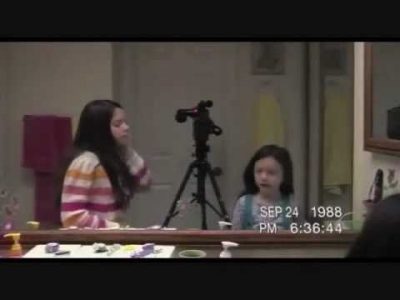 Okay, you knew this one was coming, right? If you were EVER a kid – with stupid friends or an asshole sibling – then you know the urban legend of Bloody Mary. You’ve played the game. You’ve stood in the bathroom, eyes closed, lights out, and recited the words. You stood there waiting, praying, hoping that when you opened your eyes that the gruesome visage of Bloody Mary would not be staring back at you. While the current incarnation of this delightful urban legend is vastly unknown, its historical beginnings are with Mary Tudor, sister of Queen Elizabeth I. Mary earned the name because she put to death hundreds of protestants in gruesome ways. The legend itself was meant to scare children that Mary Tudor would come and get them.
Okay, you knew this one was coming, right? If you were EVER a kid – with stupid friends or an asshole sibling – then you know the urban legend of Bloody Mary. You’ve played the game. You’ve stood in the bathroom, eyes closed, lights out, and recited the words. You stood there waiting, praying, hoping that when you opened your eyes that the gruesome visage of Bloody Mary would not be staring back at you. While the current incarnation of this delightful urban legend is vastly unknown, its historical beginnings are with Mary Tudor, sister of Queen Elizabeth I. Mary earned the name because she put to death hundreds of protestants in gruesome ways. The legend itself was meant to scare children that Mary Tudor would come and get them.
Sadly, the urban legend doesn’t seem to rear its head much in horror movies. It becomes more of a side note. The movie, “Bloody Mary”, of course has to be mentioned. Again, Superntural covers her. “Urban Legend” also uses the story to great effect. You could easily make the argument that “Beetlejuice” loosely follows the motif. “Paranormal Activity 3” also uses it in a very cool way. But “Candyman”, I think, closely follows the urban legend of Bloody Mary despite being an amalgamation of two particularly creepy legends.
9. The Blood Countess
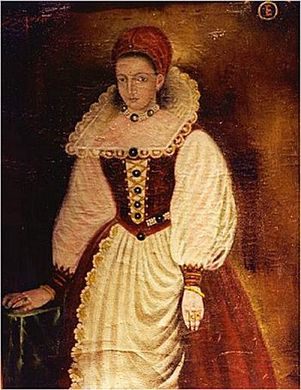
Countess Elizabeth Bathory is the world’s first female serial killer. And, quite possibly, the most prolific serial killer in the history of the world. Elizabeth, born in 1560 in Hungary, was daughter to a prominent protestant family. She suffered from seizures, fits of rage, and uncontrollable outbursts. Her family were not saints. From an early age, she witnessed atrocities. One story involved her father having a gypsy woman sewn up in the belly of a horse for stealing. Her uncle taught her devil worship and her dear aunt taught her all about sadomasochism.
She was married at 15. Her husband was just as cruel as her own family and showed her his ways of torture. Upon his death in 1600, she moved to one of her castles. One evening, while her hair was being brushed, a servant snagged it. Bathory smacked her. Blood hit her skin and she noticed it seemed more youthful. Thus, began the reign of the most prolific serial killer in history. She surrounded herself with youthful girls from the area. She lured them to the castle with hope of a better future. Instead, they were met with cruelty and death. It’s said that Bathory would bathe in their blood.
It wasn’t until 1609, when she killed a noble girl (it figures, right? Even back then the cops do nothing until the rich get hurt), that the authorities acted. Records show that they found bodies (and parts) everywhere. One was still burning in the fireplace. Bathory was sentenced to house arrest for life in a boarded-up room in her castle while her servants were put to death. She was convicted of 80 murders; however, it’s believed she did in well over 650!
For someone as terrible and horrifying as Elizabeth Bathory, you’d hope for something better than “Mama Dracula”. “Daughters of Darkness” and “Countess Dracula” are among other offerings. “Immoral Tales” may be the best depiction of the legend. “Stay Alive” is directly connected to the legend by way of “video game horror”. Even Stephen King paid homage in “Carrie”, but, honestly, the absolute best movie about Elizabeth Bathory will always be “Dracula”. Not “daughters of…” or “bride of…” no, “Dracula”.
Many believe that Bram Stoker based his tale of the famous blood-sucker on Vlad the Impaler, of which elements do appear, Bram Stoker’s inspiration was, in fact, Countess Elizabeth Bathory.
The more you know… as a side note… if you’re ever in Slovakia, you can tour her castle.
8. The Wild Huntsman
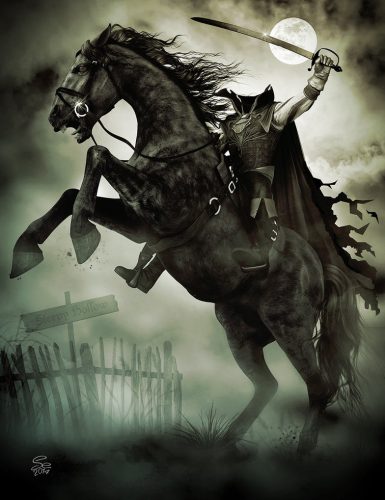
The story is simple, really. It’s a story of a horseman who chases down criminals, through the woods, at “breakneck” speeds. This is the original urban legend that gave birth to one of the greatest American Novelists, novels, and folklore still told today: “The Legend of Sleepy Hollow”. Washington Irving’s tale begins in the sleepy town of Sleepy Hollow. Ichabod Crane, a slight man, a school teacher, arrives and immediately falls for a beautiful young woman named Katrina. Unfortunately, for this 90-lb weakling, Abraham Van Brunt kicks sand in his face.
When Crane arrives, the locals tell the tale of a headless soldier, who lost his noggin by way of a cannonball during the Revolutionary War, roams the woods looking for his lost head. Any interruption of this deed will lead to your death. Crane leaves a party one night and comes to face the dark rider. He runs for the covered bridge, which the rider cannot cross, but is met with a flaming pumpkin instead and is “spirited away by supernatural means”.
The story has its roots in fact. Crane is based off a real soldier by the same name who served in the War of 1812 that Irving met at Fort Pike in 1812. His mannerisms; however, are based off a real school teacher, Jesse Merwin. The orginal Wild Huntsman tale has changed due to hostilities in and around Tarrytown, New York. The area is a large Dutch population. After the Revolutionary War, it became a place akin to the Wild West. Tensions between British Loyalists and these new “Americans” were high. Hessian mercenaries, the Jagers, German soldiers known for their horsemanship and ruthlessness, also were in abundance due to the British. The Dutch, not fond of these men, adapted the Wild Huntsman do be a Hessian mercenary who killed in the woods on horseback without discretion.
A family comes across a headless corpse of one of these Hessians and buries him in the Old Dutch Burying Ground in an unmarked grave. Now, you have a headless horseman and the story is born. Sleepy Hollow itself wasn’t a real place until quite recently when The village of North Tarrytown changed its name.
From Disney’s “The Adventures of Ichabod and Mr. Toad” to “Sleepy Hollow”, this story continues to invoke and mingle real history with legend into terrifying, and sometimes funny, instances of filmatic brilliance.
7. Bigfoot
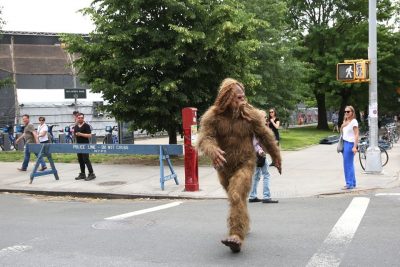 I’m sure all of you squatchers will raise a fist and proclaim, “It’s NOT an urban legend! He’s real!” and, well, you’re wrong. Until there’s a body – or even just some DNA evidence – the big guy will live on in myth and legend as possibly one of the most prolific monsters in folklore and urban legend. From merchandise, movies, books, and ridiculous television shows on cable, Bigfoot has his size 25s firmly rooted in our culture. From the Yeti in the Himalayan Mountains and the Skunk Ape in Florida to the Rouk Monster in the Southern US to the Ts’emekwes of the Lummi, stories of “wild men” seem to be present in almost every culture on the planet. Now that’s some good PR and all without Twitter or Snapchat.
I’m sure all of you squatchers will raise a fist and proclaim, “It’s NOT an urban legend! He’s real!” and, well, you’re wrong. Until there’s a body – or even just some DNA evidence – the big guy will live on in myth and legend as possibly one of the most prolific monsters in folklore and urban legend. From merchandise, movies, books, and ridiculous television shows on cable, Bigfoot has his size 25s firmly rooted in our culture. From the Yeti in the Himalayan Mountains and the Skunk Ape in Florida to the Rouk Monster in the Southern US to the Ts’emekwes of the Lummi, stories of “wild men” seem to be present in almost every culture on the planet. Now that’s some good PR and all without Twitter or Snapchat.
Bigfoot has been used as a funny guy in film by way of “Harry and the Henderson’s”, but he can also be a terrifying. One of the best films to date is “Willow Creek”. This pseudo-doc is written and directed by Bobcat Goldthwait. It’s a great movie and worth checking out. Even if you don’t care for “found footage” films. There are other films dedicated to the subject, of course, including “The Sighting”, “Night Claws”, and “The Legend of Boggy Creek” which is based primarily off the Patterson-Gimlin film (both men worked in Hollywood and Patterson, years before, tried to sell a pseudo-doc about Bigfoot, so draw your own conclusions). But if you really want a good recommendation? Then check out “Cry Wilderness” featured on the NEW MST3K on Netflix. It is worth it.
6. The Vanishing Hitchhiker/Lady in White
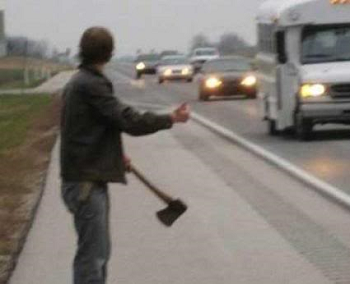
The story is simple: A driver picks up a hitch-hiker. When they leave the car, they leave behind an object, a bit of information, or some other means that allows the driver to find them. When they do, they are told this person is dead, having been killed, usually in a car accident or hit and run. This story has been making its ways through the popular culture since the 1870s, with stories across the globe. In most cases, the stories aren’t violent or otherwise ominous and are more about closure. And, let’s face it, the urban legend of the “Lady in White” is a subset of the Vanishing Hitchhiker.
This urban legend has, of course, been seen in episodes of Supernatural, but will also rear its ghostlike head in other movies. Most notably being “The Hitcher” and “Kalifornia”. Of course, the aptly named, “The Hitchhiker” and “Road Games”.
5. The Boogeyman
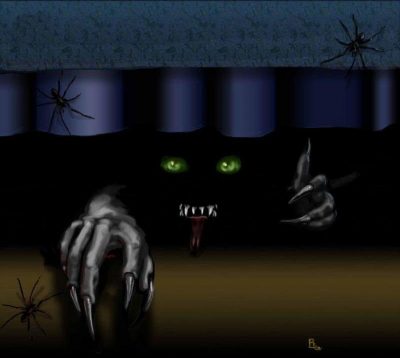 Used as a means to get children to listen, the Boogyman has been a part of our culture and pop culture for decades. Its origins are far older, with some of the earliest representations dating back to 1797. The boogeyman (boogie man, bogeyman, or bogieman) is often faceless. He has no sound to his movements. He lurks in the shadows, under beds, and in closets until he descends upon helpless kids or anyone else he may wish to target. The story is English as the name is derived from Middle English; however, it occurs in every country so someone else may claim ownership.
Used as a means to get children to listen, the Boogyman has been a part of our culture and pop culture for decades. Its origins are far older, with some of the earliest representations dating back to 1797. The boogeyman (boogie man, bogeyman, or bogieman) is often faceless. He has no sound to his movements. He lurks in the shadows, under beds, and in closets until he descends upon helpless kids or anyone else he may wish to target. The story is English as the name is derived from Middle English; however, it occurs in every country so someone else may claim ownership.
Regardless, the boogeyman remains a terrifying character used to scare us even to this day. In horror movies, the boogeyman has been played to death (pun intended). Movies like the “Boogeyman” serve as a reminder that not all urban legends need to be made into a feature film. It’s an easy trope to utilize. Whether you’re making a B-movie or something, like “Halloween”, which stays with us for decades, the Boogeyman is here to stay. Like Bigfoot in many ways, the Boogeyman can easily be transformed from the terrifying Michael Myers, to the delightful bass tones of Tim Burton’s, Oogie Boogie.
4. Gremlins
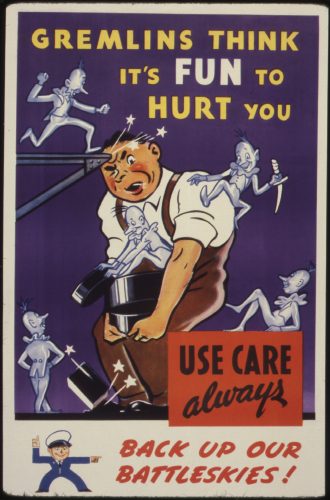
These little badasses have been a part of folklore since, possibly, the beginning of time. Little creatures bent on causing havoc. Most notably found in stories of airman during World World I and World War II, as a way to explain issues they were having. They range from being downright destructive to just a little mischievous. They are usually depicted as green, svelte, and winged. More or less, they’re the dark side’s version of a fairy.
They are a versatile lot and can be added to almost any horror or fantasy movie as a side beast. We’ve seen them in Bugs Bunny cartoons all the way to Harry Potter. The best known film, obviously, would be “Gremlins”. Murray Futterman, portrayed by the talented Dick Miller, makes note of the little bastards in regards to his tractor. Gremlins is rated PG but in the 80s it pushed the envelope to the point that it helped to usher in PG-13. Of course, the original script was much darker. But, hey… Howie Mandel voiced Gizmo (Peter Cullen and Michael Winslow also voiced some gremlins). We got to see Chuck Jones (Bugs and Daffy animator) in the bar critiquing Billy’s artwork of Mrs. Deagle (played by Polly Holliday aka Flo). It was a win start to finish. Watch it today.
“Gremlins” isn’t the only film to feature these pesky creatures. Other entrants from the urban legend include: “Ghoulies”, “Troll”, and “Hobgoblin”. None of them catch the charm, wit, and style of “Gremlins”, but exist nonetheless as cheesy 80s camp. Always fun to watch. Incidentally, the gremlins in the truck aren’t the only urban legend mentioned. Phoebe Cate’s character rebels the story of her father playing Santa one year and getting lodged in the chimney. Total urban legend.
3. Aokigahara
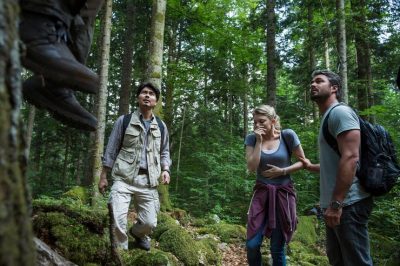 Japan is a fascinating country that exists as a dichotomy of truths. It’s beautiful, peaceful, and serene, full of forests and majestic mountains. Go deeper and you find enormous cities of glass and technological wonders. The people are also as diverse. Aokigahara, known as the Sea of Trees, is 13.5 square miles of some of the thickest forest you’ve ever seen. This seemingly peaceful place, like the rest of Japan, is more than it seems on the surface. It’s known as something else: the suicide forest.
Japan is a fascinating country that exists as a dichotomy of truths. It’s beautiful, peaceful, and serene, full of forests and majestic mountains. Go deeper and you find enormous cities of glass and technological wonders. The people are also as diverse. Aokigahara, known as the Sea of Trees, is 13.5 square miles of some of the thickest forest you’ve ever seen. This seemingly peaceful place, like the rest of Japan, is more than it seems on the surface. It’s known as something else: the suicide forest.
The legends associated with this dreadful, yet beautiful, location, are all based on ghost stories. The yurei (ghosts) are said to haunt and torment those who enter the forest, luring them to their inevitable fates. As history shows, if you come to the forest, you are most likely not planning on coming out. Park Rangers go in every few days to collect the bodies. Unfortunately, the dense forest sometimes makes finding corpses a process that could take years. For many Japanese, it is a place to participate is Seppuku, a ritual suicide practiced by samurai from feudal Japan. They view it as a way to restore honor by taking responsibility for their discretions.
This is nothing new. The suicide forest has been used, allegedly, for death for centuries. During times of famine, a practice known as ubasute was conducted. A family member would take someone, most likely an old woman, into the forest. They would leave them there to starve to death. These spirits are said to become the yurei.
Not many films have been produced about the forest. The ones that have been made seem to be respectful of the dead and the grimness associated with the location. The most recent film, “The Forest”, was released in 2016. Natalie Dormer (Game of Thrones) stars as a girl entering the forest to save her twin sister. Some of the other films, not necessarily horror, include “Sea of Trees”, “Forest of the Living Dead”, and “Grave Halloween”.
2. The Mothman
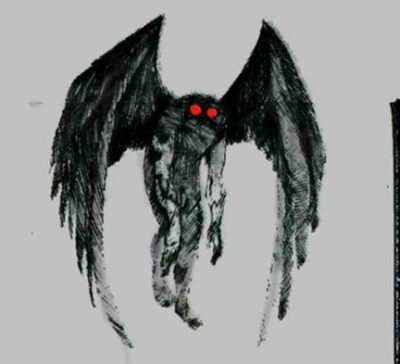 Upon driving into Point Pleasant, West Virginia, you will notice a statue of the Mothman. The legacy of this urban legend is relatively new and the stories surrounding it take place over a short period of time from Nov. 12, 1966 to Dec. 15, 1967. The incidents, ranging from men digging a grave, to two couples, all reported seeing the same birdlike creature with red, glowing eyes and a 10-foot wingspan near the TNT area which was home to a WWII munitions plant. Over the course of those few days more sightings were made. The authorities, always looking to deny, blamed the sandhill crane. The legend got its wings (pun intended) after the collapse of the Silver Bridge on Dec. 15th, 1967 where 46 people died. Somehow, the sighting was a warning to the bridge collapse.
Upon driving into Point Pleasant, West Virginia, you will notice a statue of the Mothman. The legacy of this urban legend is relatively new and the stories surrounding it take place over a short period of time from Nov. 12, 1966 to Dec. 15, 1967. The incidents, ranging from men digging a grave, to two couples, all reported seeing the same birdlike creature with red, glowing eyes and a 10-foot wingspan near the TNT area which was home to a WWII munitions plant. Over the course of those few days more sightings were made. The authorities, always looking to deny, blamed the sandhill crane. The legend got its wings (pun intended) after the collapse of the Silver Bridge on Dec. 15th, 1967 where 46 people died. Somehow, the sighting was a warning to the bridge collapse.
Only a few movies cite the Mothman, including Syfy’s original movie, “Mothman” and “The Mothman Prophecies” which starred Richard Gere. This film was based (quite loosely) on John Keel’s novel by the same name. Despite its lack of direct influence on the genre by name alone, it’s visage is quite often seen. The creature in “Jeepers Creepers” is a prime example.
1. Phantom Vehicles
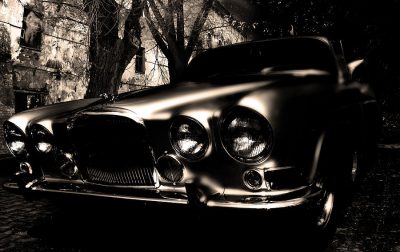 Be it that ghost locomotive your granddad told you about or that black mariah drawn by unseen steeds carrying corpses to their final resting place, the idea of a phantom vehicle has been a long and storied one. A phantom vehicle, for all intents and purposes (at least) refers to a driverless vehicle bent on revenge and murder. In fact, within folklore and other urband legends, you can place a version of the vanishing hitchhiker where the spirit picks someone up (like the in Pee Wee’s Big Adventure and Large Marge). If it can move, it can be a phantom. People often note seeing the vehicle one moment then, ahead of them, it appears again. Sometimes out of flights of fancy or malevolence.
Be it that ghost locomotive your granddad told you about or that black mariah drawn by unseen steeds carrying corpses to their final resting place, the idea of a phantom vehicle has been a long and storied one. A phantom vehicle, for all intents and purposes (at least) refers to a driverless vehicle bent on revenge and murder. In fact, within folklore and other urband legends, you can place a version of the vanishing hitchhiker where the spirit picks someone up (like the in Pee Wee’s Big Adventure and Large Marge). If it can move, it can be a phantom. People often note seeing the vehicle one moment then, ahead of them, it appears again. Sometimes out of flights of fancy or malevolence.
The list of film and TV associated with phantom vehicles runs the gambit from funny, “My Mother the Car” from 1966, to the downright terrifying in Stephen King’s, “Christine”. I could go on for hours about the subject matter here but, to save time, I’ll pick some of the highlights not mentioned. “Maximum Overdrive” is a must for anyone looking to be scared by a semi the Green Goblin as a radiator cover. The movie isn’t JUST about phantom vehicles, but they’re more terrifying than a wobbly toaster. Other films that require a mention are “The Wraith”, “Fog”, “Langoliers”, “Killdozer”, “7500”, and “Black Cadillac”.
 Horror News | HNN Official Site | Horror Movies,Trailers, Reviews
Horror News | HNN Official Site | Horror Movies,Trailers, Reviews




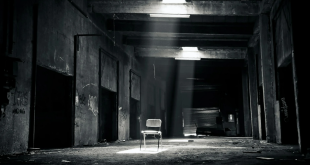

Great article! You could add Slenderman and Alligators in the Sewer.